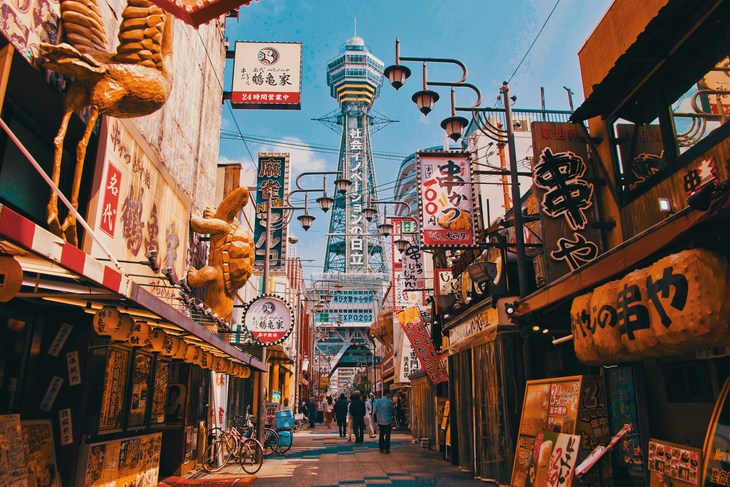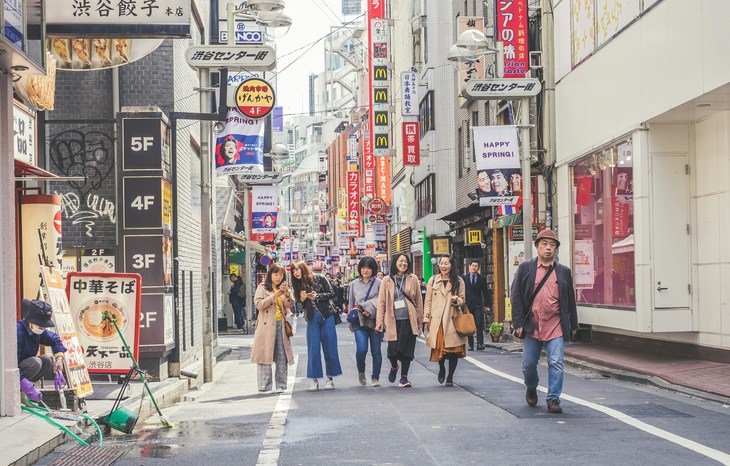A guide to the Post Office in Japan
When you are living in another country, especially one where you may not speak the language, something as simple as mailing a letter can seem that much more challenging. But if you are living in Japan, there is a good chance you will need to go to the post office to mail something, and this can seem daunting. So let's make going to the post office less scary by laying out all the services offered by post offices in Japan, what you can and cannot mail internationally through the post office, and some things you should know if you need to send mail or presents to people in Japan.
Mailing Services Offered at the Post Office
Japan Post is the primary company in charge of mail in Japan. Unless you decide to mail something through a private courier company, you'll be going through Japan Post to send your letters or packages. Here are the different services they offer.
・Regular Mail Service
Regular everyday mail, which you can send from any of the bright red mailboxes all over Japan or at the post office itself, is classified into standard mail and non-standard mail. Which category your letter or package falls into depends on its weight and size.
Standard mail should weigh 50g or less. For size, it should fall within the following dimensions:
- Length: 23cm
- Width: 12cm
- Thickness: 1cm
Non-standard mail should weigh 4kg or less, and the total length, width, and height of the mail should be under 90cm. The length of the mail should not be over 60cm.
・Registered Mail
If you need to be able to track mail or packages you send out and want to receive compensation in the case of damage to your mail, then you should consider registered mail. You'll receive a tracking number for your mail and if it is lost or damaged, you'll be compensated.
Registered mail is more expensive than standard mail and there are several types to choose from, the cheapest option being simplified registered mail. There is also ordinary registered mail as well as currency registered mail. If you need to mail physical cash, then you'll have to do it by currency-registered mail.
・EMS(International Express Mail)
When you need to send mail overseas, EMS (Express Mail Service) may be one of your best options. It is an international airmail service and mail can often be delivered in as little as a few days to regions around the world.
Like registered mail, you'll be able to track your mail and will be compensated if your mail or package is damaged or lost.
Also, Japan Post offers "Cool EMS" for when you need to keep items chilled.
Click here to learn more about EMS.
Sending mail internationally can be complicated, but Japan Post has put together a helpful beginner's guide in English that you can check out by clicking here.
In particular, this guide has important information about how to make and print out shipping labels you will need to have in order to mail your package. As of March 1, 2024, packages containing goods cannot be mailed with a handwritten label, so printing one out is necessary.
Click here to learn more about this new policy.
Finally, click here to visit Japan Post's international shipping website, where you will find information on rates, what can and cannot be delivered internationally, and much more.
Goods That Cannot be Mailed Internationally
There are strict rules about what you can and cannot mail internationally. Some of these rules apply to every country in the world, while other countries have their own specific restrictions. Basically, anything that you wouldn't be allowed to take on an airplane is usually not possible to mail.
Goods that cannot be mailed anywhere in the world include aerosol sprays, perfume, fireworks, alcoholic beverages, mobile batteries, electronic cigarettes, and so on.
Goods that you may not be able to send to other countries include tobacco, meat, and even instant noodles if you are trying to send them to a country where beef is prohibited.
Click here to find full lists of what you cannot mail internationally.
Important Things to Know When Sending Mail in Japan
The rules and etiquette involved in sending mail in Japan may be different from those in your home country. Here is a brief overview of some important things you should know about sending mail in Japan.
・Where and How Many Stamps?
As a general rule, in Japan stamps are affixed on the upper left side of a letter or package. Often there will be a spot marked on envelopes that indicates where to put the stamp, but if there isn't now you'll know where to put the stamp.
If you don't affix the stamp to the top left corner your mail will still be delivered, so do not worry if you make a mistake. That being said, if you are sending mail to someone important in Japan it makes a much better impression if the stamp is in the right spot.
Also, while there is no limit to the number of stamps you can use, don't go overboard and use too many. People may find it a bit odd or off-putting.
・ Japanese Letter Structure
If you are in a position where you want or need to write a letter in Japanese, here is some important information you should know about how to structure your letter.
Letters usually begin with an "opening," often the word "Haikei" (拝啓), which means "Dear Sir or Ma'am". Then, it is generally customary to include some kind of seasonal greeting based on the time of year or any upcoming or recent holidays, followed by a sentence or two asking about the recipient's health. Finally, end the letter with a "closing" word such as "Keigu" (敬具). All this is intended to show respect to the recipient while also showing that you care about them.
This is not the kind of Japanese you will need in your day-to-day life, so if there aren't any situations where you need to write letters in Japanese, you won't need this language. But if you do find yourself writing a letter in Japanese, especially to someone like an important client, be sure to include this formal language.
Post Office Hours
Generally speaking, post offices are only open on weekdays from 9:00 am to 5:00 pm. However, in major cities like Tokyo, there are post offices that are open 24 hours a day, as well as post offices open on weekends. If you are not in a major city, however, don't expect to find these kinds of post offices. Also, these post offices that have longer hours or are open on weekends may not be able to provide all the same services available as during normal business hours.
You can of course put your mail in regular mailboxes 24/7, and most mailboxes have the times when the mail will be collected written on them. Therefore you can know by when you need to put your mail in the box to make sure that it is collected and sent off as quickly as possible.
If you have any other questions about post offices in Japan, be sure to check out Japan Post's English website. There you'll find information about nearby post offices, detailed information on postage costs and delivery times, information on international shipping, and more.
Click here to visit the Japan Post Website.


























